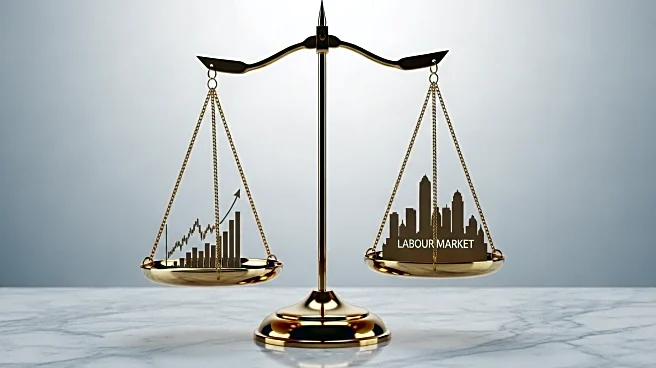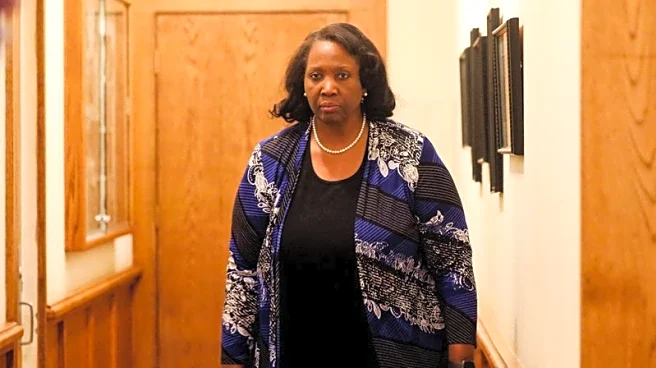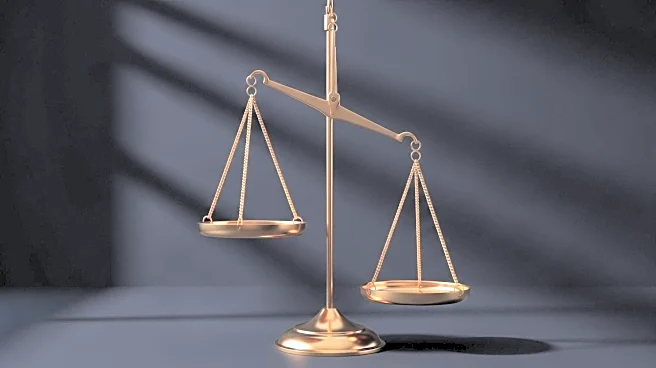What is the story about?
What's Happening?
The ongoing U.S. government shutdown is expected to influence the Federal Reserve's decision to lower interest rates further. Market analysts have priced in a 100% probability of a rate cut in October, with an 88% chance of another cut in December. The shutdown has caused data delays, which, combined with concerns over the labor market, are pushing the Federal Reserve towards a more cautious approach. Federal Reserve Chair Jerome Powell and other central bankers are likely to favor easing monetary policy to mitigate potential economic damage from the shutdown.
Why It's Important?
The potential for additional interest rate cuts by the Federal Reserve is significant for the U.S. economy. Lower interest rates can stimulate economic activity by making borrowing cheaper for consumers and businesses. This could help offset the negative economic impacts of the government shutdown, such as reduced consumer spending and business investment. However, there are concerns that continued rate cuts could lead to inflationary pressures in the long term. The Federal Reserve's actions will be closely watched by financial markets, as they have implications for economic growth, employment, and inflation.
What's Next?
The Federal Reserve is scheduled to meet on October 28-29, where they will review updated economic data and make a decision on interest rates. If the government shutdown persists, it could further influence the Fed's decision-making process. Stakeholders, including businesses and investors, will be monitoring the situation closely, as the Fed's actions could impact financial markets and economic forecasts. The outcome of the shutdown and the Fed's response will be critical in shaping the economic landscape for the remainder of the year.
AI Generated Content
Do you find this article useful?














